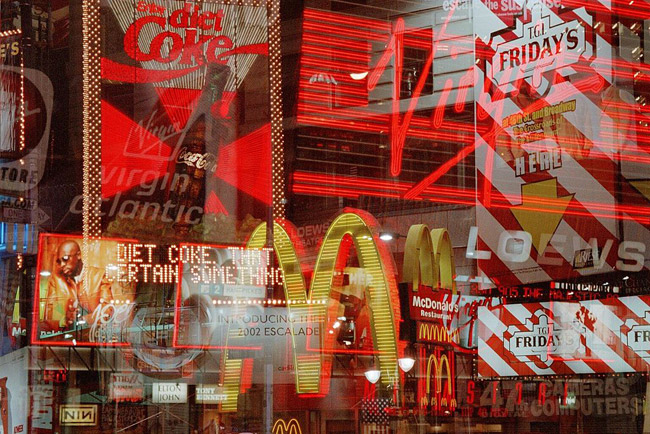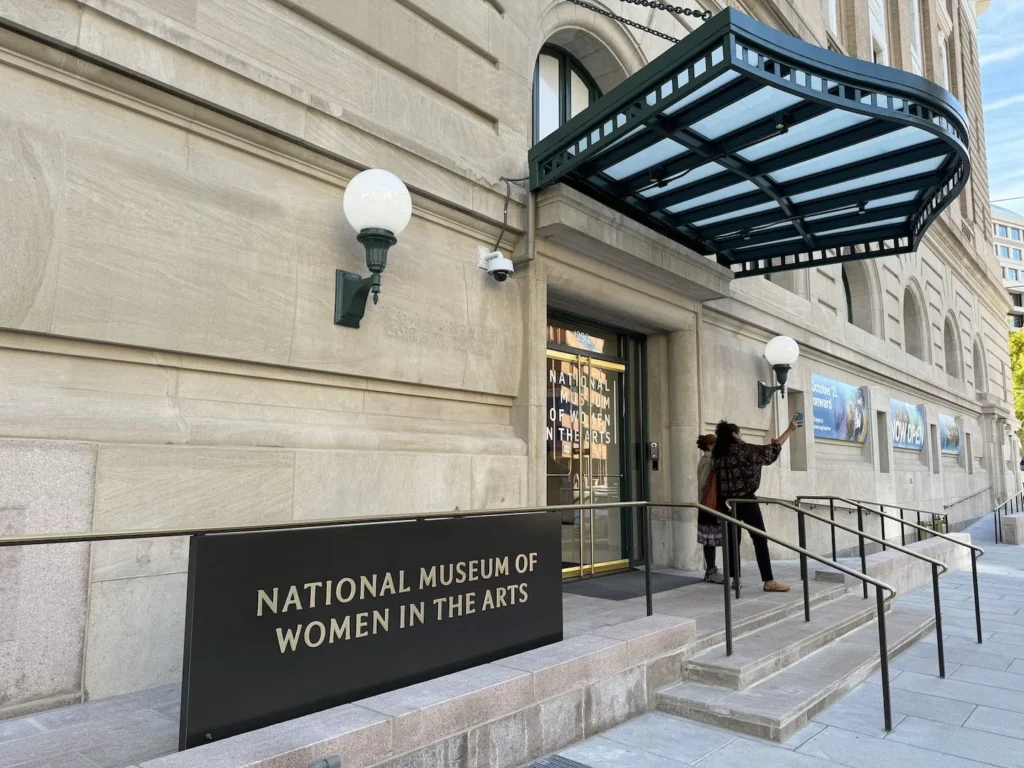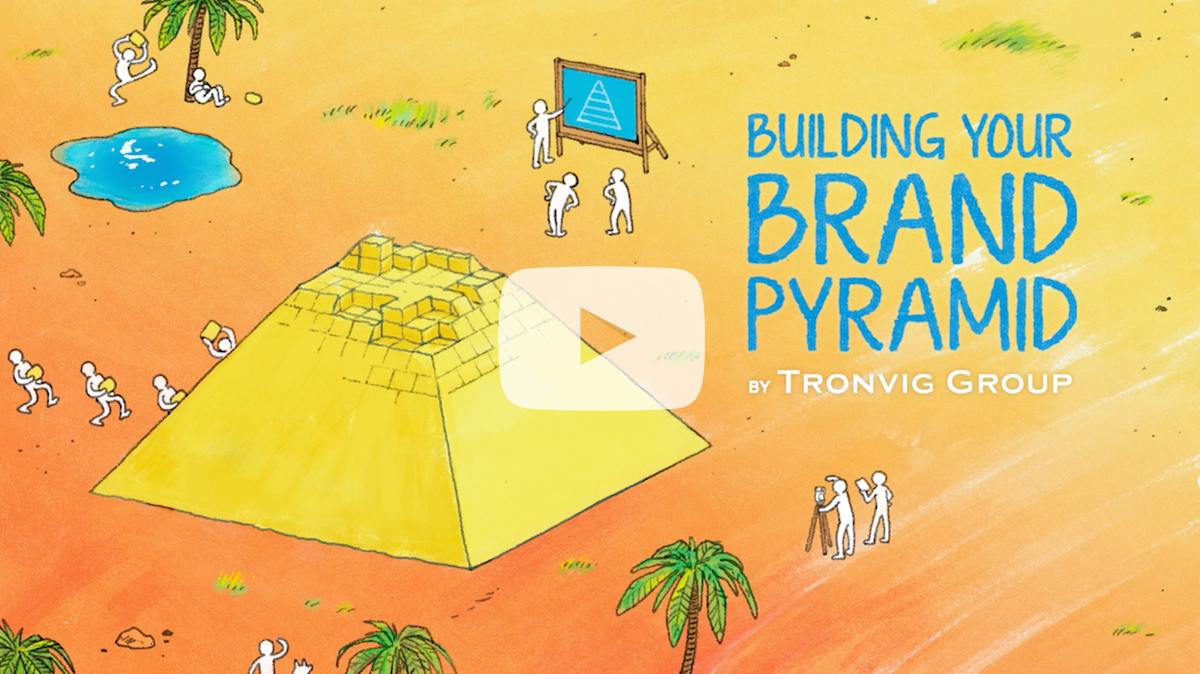I ask you, what if museums were run like successful companies?
Imagine for a moment that you were not an institution dedicated to the public good, but instead dedicated to (shh…) private profit.
If you were, this quote from Peter Drucker would ring very true:

As a business, if you are not marketing and innovating, you will be eliminated from the marketplace. This happens all the time. Nearly 90% of the Fortune 500 companies from 1955 no longer exist. Maybe this sounds like an entirely different world from yours.
I’d suggest that it is not.
True, you do not need profits for shareholders, and you are not in a no-holds-barred, cutthroat competition with others who do the same thing as you, but you ARE in competition. You DO compete for visitors, members, employees, donations, and governmental or institutional funding.
You DO need to market your message so that people know about and avail themselves of your great and valuable work.
So stay with me for a moment. If you—like companies in the for-profit world—are in competition, and, like them, you are reliant on marketing to truly succeed, you would benefit also from something that successful companies spend a lot of time on—branding.
As a business, if you are not marketing and innovating, you will be eliminated from the marketplace.
Let me presume to describe you, and to tell you what you need to do.
Your brand is weak or fuzzy in the minds of both your current and potential brand consumers. There is no commonly held image or phrase that captures exactly what you mean to those who are familiar with you, and among those who are not familiar with you, there are no images at all in their heads, or perhaps the images and ideas about you that they hold are no longer or never were really true.
Put another way, those who have visited your museum do not tell a consistent or predictable story about their experience, and those who have not yet visited hold incomplete, inaccurate or unhelpful images and stories in their minds.
This situation is the result of your inability (thus far) to simply, coherently and consistently communicate a single brand idea to the outside world. You simply have too many important things to say. Although you may not realize it, this lack of clarity puts you at a disadvantage as you work to meet the competitive challenges of attracting new visitors, marketing your exhibits and meeting your fundraising objectives.
You would greatly benefit from having a single, unified, easy-to-understand story and message that is consistently projected outward.
You would greatly benefit from having a single, unified, easy-to-understand story and message that is consistently projected outward—a story that has a central image or icon that gives people something to hold onto when you pass through their minds. This is a brand. It is something that is clearly discernible to any visitor or outsider, and it is also something that is thoroughly internalized by ALL your employees.
If you want what they have, it just might be within your reach, but it starts with a brand.
You are probably not a failing institution by any means, but you probably are a failing brand. If you did have a vibrant and well-articulated brand—like all successful companies must—you would then be able to exercise more influence and control over the thousands of subtle and elusive mental transactions that actually determine whether or not, and how often, someone visits, and whether they become a member or what size donation they make.
If I have not just described your situation, you are very lucky. Keep up the good work!
If what I described cuts and bleeds a bit, well, you are not alone, and I would suggest that you need to do something about it. I would suggest that you need to be more like the Apple of your world than its Dell, more like the Federal Express than its Emery. Who?
Exactly.
They were the largest overnight carrier in the world in 1981. They no longer exist. Why? The short answer is innovation and marketing … on the part of Federal Express.
It was in the early 80’s that Federal Express launched an ad campaign created by Ally & Gargano featuring “Motormouth” John Moschitta and the tag line, “Federal Express: When it absolutely positively has to be there overnight.” to promote its domestic courier business. The rest is, as they say, history.
If you want what they have, it just might be within your reach, but it starts with a brand.
Does your museum need an affordable way to improve its brand today?
Because we know that not everyone needs or can afford our full process, we created a guided tutorial package for our foundational brand strategy tool: the Brand Pyramid. Watch the video for a preview.
For more information on this brand strategy tutorial, visit here where you will find a fuller explanation and link to a free download of the first video.
___
Image credit: Feb_02__02___Times_Square_Tr by Mike DelGaudio, used under CC BY 2.0





“What would happen if museums were run like successful companies?”
“They would focus more on branding and less on product.”
Got it, thanks. Running museums like businesses—how unique! Welcome to the 21st century!
Noted. Thank you for the comment, but I think you may have misinterpreted what I said.
I’m not saying that branding is any kind of substitute for a superior product. Quite the opposite, I think Peter Drucker rightly puts equal emphasis on product and marketing (marketing, here, connotes the larger generic term that includes branding). Museums, zoos and everyone else is touched, to a certain degree, by this “innovate or die” ethos.
If you mean to suggest that I am stating the obvious, good for your institution, I’m glad they have you.
If you mean to lament the loss of separation between culture and commerce, I’m with you, but the fact remains that exposing your great work (your collections, your discoveries, your innovations) to the world is better served by good marketing and coherent branding than by the alternative.
I do have other comments on this post that are too hateful to publish, so I seem to have struck a chord somehow. One commenter suggests that I “ask the reader to presuppose some idiotic ideas,” calling this article “…the stupidest article I’ve read in a long time.”
I’m not sure if I should take this to be the bleeding I postulate, or some other offense or invisible line I have crossed. I’m curious to know what point or editorial position contained here can be so inspiring to vitriol. For this commenter the very notion that museums are engaged in competition was inspiration to anger: “No, I’m not going to imagine that non-profits have a profit motive or that they compete with one another. Why not? Because they don’t.”
Note my previous post Not to Market is a Crime.
I continue to welcome all comments. I’ll publish any that are constructive and not anonymous.
YES! Thank you. I would have one caveat for this premise: In order to have great branding, you have to have something to brand. Not only do a lot of museums not have great messaging (or even clear, concise mission statements), but it’s difficult to boast about your museum if your exhibits and programs are not up to snuff. But, if you lack focus in what your museum is about or what it stands for (besides “preservation” and “education”), it’s difficult to have great programming and exhibits, too.
So branding is sort of a Catch-22: On the one hand, it’s easy to brand great product, but on the other hand, it’s difficult to have great product without the clarity of concise messaging/branding.
Sarah, yours is a very important point.
There is often a question as to what the problem actually is. Is it a product problem or a marketing problem? Can we reach our goals if we just throw more marketing dollars at the issue, or do we have to offer something else, something more? More often than not there IS some level of product problem. To your point, even if you perfectly brand something that has no audience, you can end up very close to where you started. It’s critical, therefore, to look at audience/consumer needs AND look unflinchingly at your product and offer. This may require that you change/improve your product. If, however, there are already places where consumer needs and your product offer intersect, you have a good starting place for an effective marketing program.
Your brand must, I believe, be true to who you really are, but it also must understand why your audiences (outside the organization) actually care. This is harder than you might think to truly ascertain. Your marketing, if it is to be effective, must understand your audiences’ needs beyond what they tell you. It has to dig down to the underlying factors that actually drive behavior. Understanding these factors for well-defined audiences and then acting on this knowledge is not easy, but it is, I believe, one of the keys to the kingdom.
I touch on this a bit in Think Like a Consumer, but this clearly deserves its own post. Thanks again Sarah for bringing it up.
Lily: Yes, after rereading this post I had a feeling that someone really smart would point this out. Thank you for bringing it up.
Can a complex institution serving diverse audiences be a brand in the sense that is reducible to a single coherent idea? Probably the answer in some cases is that it cannot. But I would like to suggest that this critique may dwell too much in the realm of features and attributes or even practical benefits and modalities (the What and How of an institutional offer) as opposed to its emotional benefits (the Why) or its values, or—all the way up at the top—its brand idea. Does the institution have an aspirational North Star that everyone on the inside understands and is thus able to apply in their day-to-day interactions with consumers? While it may be true that a large museum cannot, from a content perspective, be about one thing or one type of experience, it can strive to deliver on a brand promise that transcends all those particulars.
A brand need not be derived from a single iconic experience, and it may not be about any of the specifics of the product at all. It could be about something bigger and more abstract, and yet still deeply meaningful, like shared cultural experiences with loved ones for example, or making contemporary art accessible to a broader audience.
Maybe such a notion of a brand will never translate into “a consistent or predictable story,” and I may have been overreaching in suggesting that a museum brand should, but I do believe that a brand can give much needed direction to an institution, and that this can be very useful, for example, when evaluating the relative merits of one action or another, one type of exhibit or another. It can also shift the story that is told about that institution away from specifics that often skew negative and tend to occupy the storytelling space in the absence of a larger and well expressed brand idea.
James: Understood. It seems like your conceptualization of “the brand idea” has much in common with the strategic plan of a museum or cultural institution – i.e. that which contains the mission, vision, and goals. It is often this plan that is consulted “when evaluating the relative merits of one action or another, one type of exhibit or another”, etc. In that sense, a definable brand does already exist for many museums. However, I do agree that this plan can often remain in the folders of the manager, director, and board without being readily accessible to visitors. It would certainly do some good – in terms of providing transparency and background on the theoretical frameworks, meaning-making activities, and intentions of museums and their staff – to advertise these plans more widely. Perhaps, as you suggest, make them a brand.
“Put another way, those who have visited your museum do not tell a consistent or predictable story about their experience . . .”
I would suggest that, contrary to your the argument that this is a “result of [the museum’s] inability (thus far) to simply, coherently and consistently communicate a single brand idea to the outside world”, it is an inherent quality of the museum itself to create (and promote!) vastly different experiences and meanings.
Museums are not meant to be experienced in a consistent or predictable fashion. Branding to, as you suggest, standardize the visitor experience is a modernist notion that is unhelpful for today’s cultural institutions.
Here, here! Your suggestion that brands might actually be a kind of modernist anachronism inspired a new post: Is the museum brand god dead? Thank you for your very thoughtful comments.
Commenting on a 2013 post? My excuse is having nothing better to do; I hope yours is nostalgia, rather than failing to keep things fresh. Sarah W’s comment was defeatist at best, obvious at worst. There is no such thing as having nothing to brand; the brand is the brand, good or bad. However, you can focus your vision into a brand that lifts the quality, drive and expectations of your otherwise (in SarahW-think) “brand less” enterprise. Of course museums have a means to create a great brand and that is its brand touch points, which begins at the reception desk; the “experience” becomes the brand. The Ypres WW1 museum is one example. You are issued with a “visitor identity for 1914” and discover by 1918 if you survived or not. The Mozart museum in Vienna, which is no more than a walk around Wolfgang’s house, sucks you inexorably into his life story with a gut-wrenching conclusion. The “brand” is how you wish to be remembered and how well that memory can be shared with a friend (referral). The “experience” therefore works on your behalf. Many years ago, I discovered that school visits could generate up to 50 referrals per visitor; families have their distinct grapevines. As a schoolboy (1972), I experienced a geography outing to a relatively little known Lulworth Cove. My personal experience has generated 40 visitors and who knows where their referrals have gone. I later discovered as a teacher that Lulworth was a huge favourite with schools. To visit Lulworth today is like going to Wembley on FA Cup final day with only the floodlights and burger stands missing. There is no Catch-22 where branding is concerned. There may be financial obstacles to campaign activity in raising awareness and identifying the target audience, but with the hindsight of 7 years we have witnessed the rise of the awesome power of the web in generating the golden “referral.” The “referral,” is a KPI for anyone from good sales executives to the receptionist and your experience with “the experience” is 100% related to the clarity of the “brand.” Of course, you can’t make a silk purse out of a sow’s ear, but if your offer is that bad at the outset, there is definitely no Catch-22. If it truly is that “bad,” it’s time for a rethink!